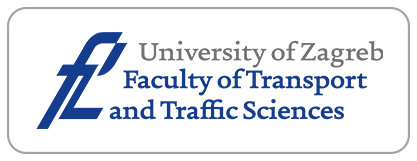Dwell Time Modelling and Optimized Simulations for Crowded Rail Transit Lines Based on Train Capacity

Downloads
Downloads
Kittelson & Associates, Inc, Parsons Brinckerhoff, et al. Transit Capacity and Quality of Service Manual, Third Edition, TCRP Report 165. Washington, DC: Transportation Research Board; 2013.
Vuchic V. Urban transit operations, planning and economics. Reston: American Society of Civil Engineers; 2005.
Lin T, Wilson NH. Dwell time relationships for light rail systems. Transport Res Rec. 1992(1361):287-95.
Lam WHK, Cheung C, Lam CF. A study of crowding effects at the Hong Kong light rail transit stations. Transportation Research Part A: Policy and Practice. 1999;33:401-15.
Wiggenraad PBL. Alighting and boarding times of passengers at Dutch railway stations. Delft: TRAIL Research School; 2001.
Harris NG, Anderson RJ. An international comparison of urban rail boarding and alighting rates. Proceedings of the Institution of Mechanical Engineers, Part F: Journal of Rail and Rapid Transit. 2007;221(4):521-6.
Tirachini A. Bus dwell time: the effect of different fare collection systems, bus floor level and age of passengers. Transportmetrica A: Transport Science. 2013;9(1):28-49.
Meng Q, Qu X. Bus dwell time estimation at bus bays: A probabilistic approach. Transportation Research Part C: Emerging Technologies. 2013;36:61-71.
Aashtiani HZ, Iravani H. Application of dwell time functions in transit assignment model. Transportation Research Record: Journal of the Transportation Research Board. 2002;1817:88-92.
Zhang Q, Han B, Li D. Modeling and simulation of passenger alighting and boarding movement in Beijing metro stations. Transportation Research Part C: Emerging Technologies. 2008;16:635-49.
Jiang Z, Li F, Xu R, Gao P. A simulation model for estimating train and passenger delays in large-scale rail transit networks. Journal of Central South University. 2012;19:3603-13.
Grube P, Núñez F, Cipriano A. An event-driven simulator for multi-line metro systems and its application to Santiago de Chile metropolitan rail network. Simulation Modelling Practice and Theory. 2011;19:393-405.
Hadas Y, Ceder A. Optimal coordination of public-transit vehicles using operational tactics examined by simulation. Transportation Research Part C: Emerging Technologies. 2010;18:879-95.
Kanai S, Shiina K, Harada S, Tomii N. An optimal delay management algorithm from passengers’ viewpoints considering the whole railway network. Journal of Rail Transport Planning & Management. 2011;1:25-37.
Carey M, Carville S. Testing schedule performance and reliability for train stations. J Oper Res Soc. 2000;51:666-82.
Heimburger DE, Herzenberg AY, Wilson NHM. Using simple simulation models in operational analysis of rail transit lines: Case study of Boston’s Red Line. Transport Res Rec. 1999:21-30.
Lam WHK, Cheung CY, Poon YF. A study of train dwelling time at the Hong Kong mass transit railway system. J Adv Transport. 1998;32:285-95.
Yu B, Yao JB, Yang ZZ. An improved headway-based holding strategy for bus transit. Transport Plan Techn. 2010;33:329-41.
Nash A, Huerlimann D. Railroad simulation using OpenTrack. Computers in railways IX. 2004;15:45-54.




















